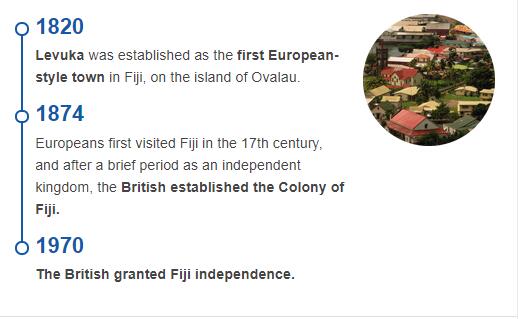According to estatelearning, Fiji is located in Oceania, bordered by Tonga to the east and Vanuatu to the west. The total land area of Fiji is 18,333 square kilometers with a coastline stretching for 1,129 kilometers. The terrain consists mostly of coastal plains with some hills and mountains in the interior. The climate is tropical with warm temperatures year-round and plenty of rainfall. Fiji experiences two distinct seasons: a wet season from November to April and a dry season from May to October.
Prehistory
Fiji was first populated around 2000 BC and constituted one of the first outposts of population expansion across the Pacific region east of New Guinea, which continued mainly to 800 AD. The earliest known settlements have been found at the mouth of the Singatoka River and at Yanuca on southern Viti Levu, as well as at Natunuku further up the west coast. The finds include the characteristic Lapita ceramics, which follow the earliest population expansion from the Bismarck archipelago. In time, a new cultural tradition would develop in the inner mountain regions, which from the centuries after Kr.f. was characterized by heavily fortified settlements, hill-forts. At the same time, a megalithic tradition emerged with ceremonial stone monuments, nangas. The contradictions between the coastal and mountain populations were accentuated as the population increased, and with the arrival of Europeans there was a constant tribal war.
History

Fiji was discovered in 1643 by Abel Tasman and visited in 1774 by James Cook. To see more information other than history, please visit Abbreviationfinder to learn more about climate, population, government, and economy for the country of Fiji. The first to describe the islands in more detail was Captain William Bligh, who passed them after the Bounty mutiny in 1789. During the first half of the 19th century, Fiji was the scene of intense, bloody wars between various Melanesian tribes (see further Melanesians). The first whites who settled on the islands were traders, missionaries, and shipwrecked sailors from Europe and the United States. Around 1850, American influence increased greatly on the islands, which was a center for export of sandalwood and sea cucumbers to China. Among other things, to counteract this influence, a leading Melanesian tribal chief in 1858 offered Fiji to Britain, which however declined. When the offer came back in 1874, the British accepted, and Fiji was crowned the same year. The British invested mainly in sugarcane plantations, which in the years 1879-1916 led to a significant import of labor from British India.
- Countryaah: Check to see the location of Fiji on the world map. Also covers major mountains, rivers and lakes in Fiji.
Fiji gained internal autonomy in 1966 and in 1970 became independent and a member of the Commonwealth. When Fiji moved to the republic in 1987 after two state coups in the same year and at the same time initiated a discrimination policy against the large population of Indian origin, it was excluded from the Commonwealth. Only since constitutional changes were made in 1997 did Fiji again become a member of the Commonwealth.
The 1999 parliamentary elections marked a victory for the Ethiopian-dominated Labor Party (Fiji Labor Party, FLP), and Mahendra Chaudhry took office as Fiji’s first prime minister of Indian origin. The following year, however, the government collapsed in a coup d’état led by businessman George Speight. After the intervention of Commander-in-Chief Voreqe (“Frank”) Bainimarama, a transitional government led by Laisenia Qarase could take office; Ratu Josefa Iloilo was named president. The Qinase-formed Fiji Nationalist Party (SDL) formed the most seats in the parliamentary elections in 2001, and the party also won in the 2006 elections.
In December 2006, Bainimarama carried out a coup and for a few years Fiji was considered a military dictatorship. In 2013, a new constitution was introduced and the following year parliamentary elections were held in which Bainimarama, who had hitherto led a transitional government, and his party Fiji First won. The coup in 2006 meant that Fiji was suspended from the Commonwealth; the suspension was lifted after the 2014 elections. See also State of affairs and politics.